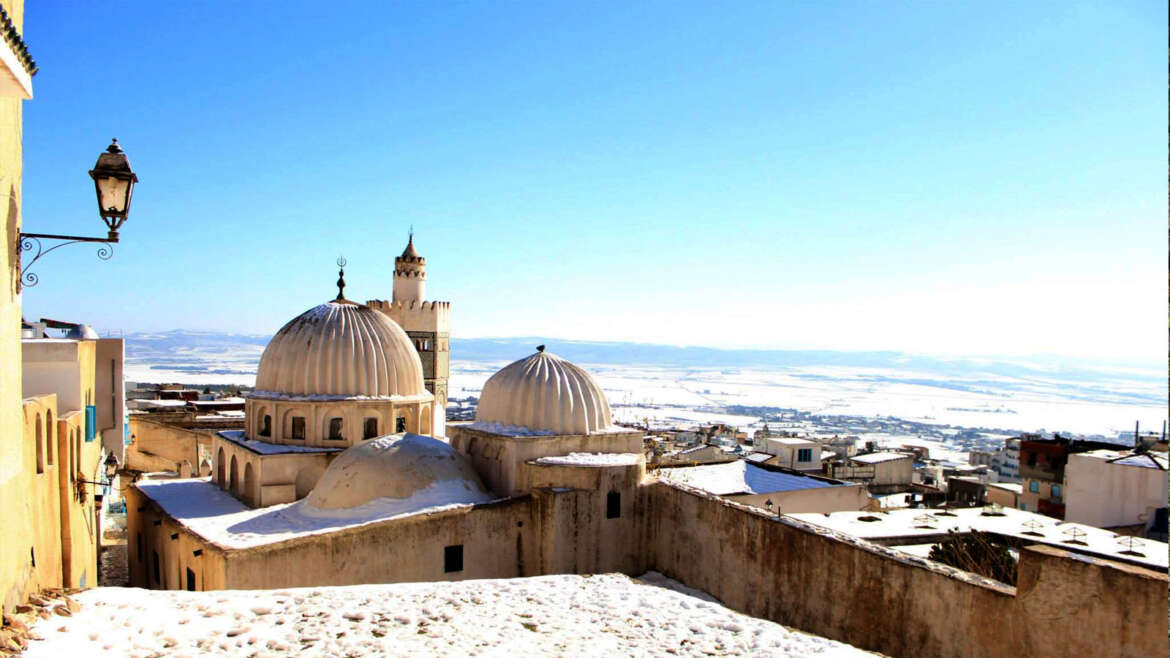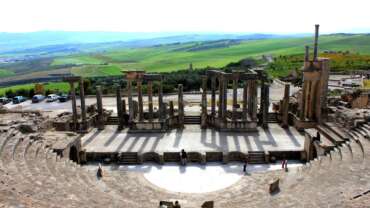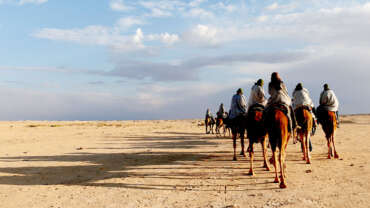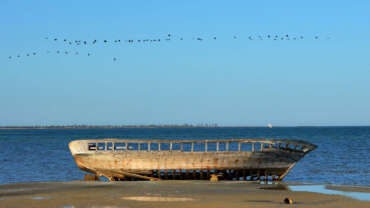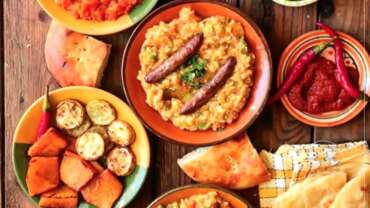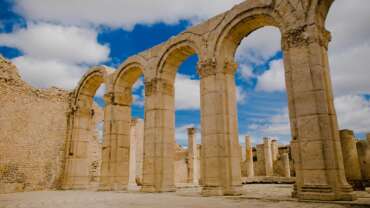Handmade Treasures!
Tunisia has built up centuries of craftsmanship. Since time immemorial, potters have been turning enormous vases and women have been weaving carpets with geometric patterns. Ceremonial outfits covered in embroidery, palaces decorated with sculpted plaster and multi-coloured earthenware bear witness to influences from around the world, from Andalusia and Italy to Turkey. From one region to the next, from one workshop to the next, you can marvel at the inventiveness, skill and rich heritage of Tunisia’s craftsmen and women.

Modern crafts combine design with fashion to create new pieces for everyday life. Traditional outfits inspire new items of clothing; lovely Bedouin fabrics are brought back to life in the form of furniture or cushions; blown glass discovers new textures to fit in to contemporary interiors. Even village craftsmen and women demonstrate a sense of inventiveness, coming up with unusual ideas to combine modern uses with authenticity.
Regional Crafts
In every town or city in Tunisia, brides wear a different outfit. Gold embroidered tunics, camisoles decorated with spangles, lace trousers, fabric shawls… each of these traditional women’s outfits is more extraordinary than the next. One of them, the one worn by Raf-Raf’s wife, is on display at the Musée du Quai Branly in Paris.
A thousand and one other accessories and items of clothing bear witness to the dexterity of Tunisian’s artisans: “fouta” (a multi-coloured hammam towel), “chechia” (a head covering for men) and “melia” (an outfit worn by Berber women) to name but a few.
Coral jewellery, earthenware tiles, silver and wooden chests, blown glass trinkets, carpets, “mergoums” and “foutas”… treat yourself when you come to Tunisia with some items that will add a splash of colour to your day-to-day life when you get back from your holiday.
In Tabarka: pay a visit to some of the jewellers near the port to pick up some unique red coral or silver pieces. Take back some memories of Aïn Draham made from sculpted wood: canes, little statues of eagles or deer… You can also buy a lovely wicker basket, Berber pottery from Sejnane or pieces made from cork collected from the region.
In El Kef and Sbeitla: in these mountainous western regions, they make hand-modelled pottery without a potter’s wheel (braseros, plates and cooking pots), woollen throws and brightly coloured Bedouin weaving.
In the medina in Tunis: In the medina in Tunis: you’ll find the most sophisticated specialities of Tunisian crafts: silk embroidered dresses, engraved silver chests and jewellery, as well as chechias, traditional red felt head coverings that are now made in all sorts of different colours.
On the Carthaginian coastline: explore the many arts and crafts shops (like jewellery, trinkets and blown glass lamps).
In Nabeul and Hammamet: pick up some china crockery from Nabeul or earthenware tiles with traditional motifs, an economical and unusual way of personalising your home. Nabeul is also known for its baskets and woven “hssira”, mats made from straw, found in homes, cafes and mosques. They make charming bedside rugs.
In Kairouan: it’s impossible to ignore Kairouan’s main speciality, carpets, which you’ll find everywhere. Thick rugs with knotted ends are the classic Kairouan style, with a wide range of different designs. Shorter pile carpets, covered with geometric patterns or little stylised figures – gazelles, people – are lighter and cheaper. You’ll find all shapes and sizes, from a small chair mats to a huge “mergoum” to cover a whole room. There are also plenty of other examples of craftsmanship for you to take home with you, from copper and pottery to leather goods.
In Mahdia: treat yourself to an exquisite woven silk scarf from a workshop in the medina, an age-old speciality in Mahdia. In the workshops throughout the town, weavers create silk fabrics with bands of colour, made to stand out with thin gold and silver lines and geometric patterns. The region is also known for its “foutas”, long towels in pastel or light colours, brightened up with thin stripes, which have become a popular fashion accessory.
In Sousse and Monastir: the souks are packed with Tunisian arts and crafts, including Kairouan carpets, carved copper lamps, embroidered dresses, decorative china tea sets and multi-coloured leather slippers… Look out for the lovely pieces made out of olive wood, including statuettes, cutlery and kitchen utensils. In Moknine, a village of potters, large terracotta vases are the speciality, as well as multi-coloured china crockery.
In Sfax: in Sfax head to the medina to seek out little wooden pieces that were once part of everyday life: “qobqabs” (slippers for the Hammam), kitchen utensils and multi-coloured spinning tops. In Kerkennah you’ll find natural sponges and traditional boat models (“loude”) made by the island’s craftsmen.
In Djerba: a visit to the jewellery souk is a must for stunning enamelled silver pieces. Not far away, shops sell a wide range of tablecloths, scarves, hangings and striped throws made in Djerba’s workshops. You can also pick up a hat made of woven palm leaves.
In Tozeur: every single part of the palm tree is used here, to make all sorts of things, including baskets out of woven palm leaves and chests out of palm wood.
In Douz: as a souvenir of your desert adventures, you can take home a “chèche” (a long cotton scarf to protect your face) and some leather sandals.
In Gabès: at the Jara market in Gabès, you can snap up some of the region’s arts and crafts specialities. You’ll find all sorts of pieces made out of woven esparto: baskets, sunhats, embroidered shoes and stunning “mergoums” (short-pile rugs) from the south of Tunisia, in warm colours and with geometric Berber patterns.
In Tataouine: check out the weekly markets, where you can find brightly covered woven throws or some lovely material decorated with chevrons and geometric patterns like a “bakhnoug” (a Berber shawl) worn by women in this region.


Weaving & Carpets
Tunisia has a rich tradition of weaving rugs. The story goes that in the 19th century, the daughter of the Ottoman governor was the first person, in Kairouan, to weave a carpet using wool to give to one of the city’s mosques. The tradition continued, making Kairouan the capital of carpets in Tunisia.
A Kairouan carpet is the one that most closely resembles oriental carpets. You can recognise them from the large medallion in the middle, surrounded by a flower pattern and a frame of parallel stripes. Classics include those with a bright red main feature and others with white and brown natural sheep wool colours. Admire the work of craftsmen and women in a carpet workshop and marvel at their skill and the amazing patterns that come to life before your very eyes.
All sorts of carpets have been made in Tunisia since ancient times. “Klims” and “mergoums” are short pile rugs, decorated with parallel strips and Berber motifs, and “gtifs” are thick, brightly coloured carpets made in the south and in the countryside.
In homes in villages in the south, weaving plays a particularly important role. Carpets grace the floor, throws cover the walls and beds. Their warm colours are created using pigments from plants: bright red, midnight blue, brown, orange… The simplest boast brightly coloured stripes. The most beautiful are completely covered in geometric motifs: diamonds, chevrons, symbols and little stylised animals, drawing on a traditional repertoire of meanings.
Village women also weave little scarves that they wear to go out, “bakhnoug”. These fine pieces of wool, red for young girls, black for older women, are decorated with delicate white patterns.



